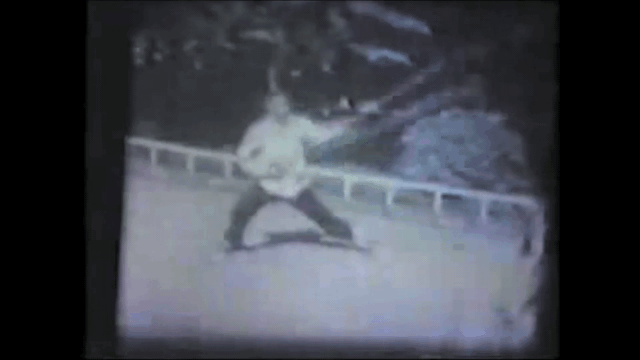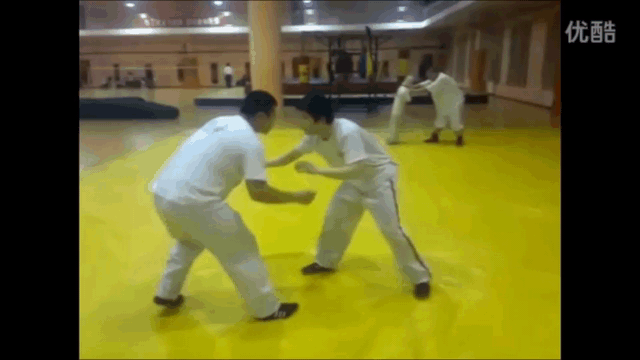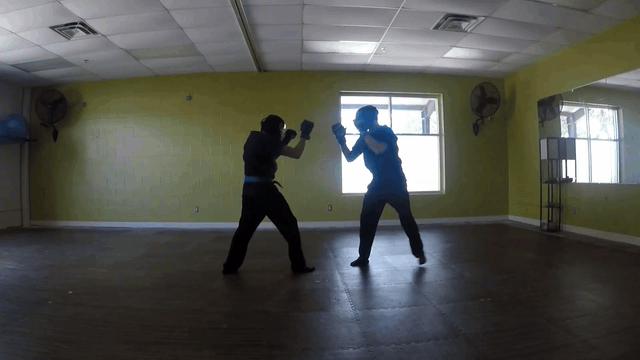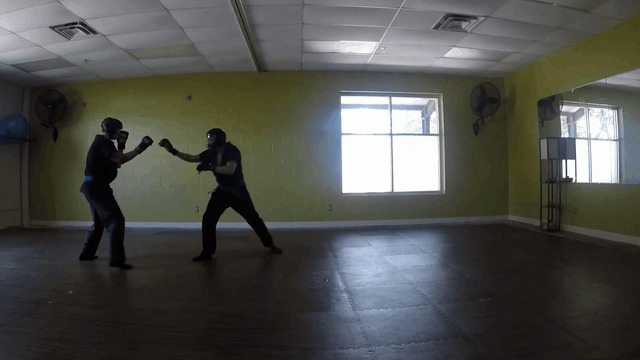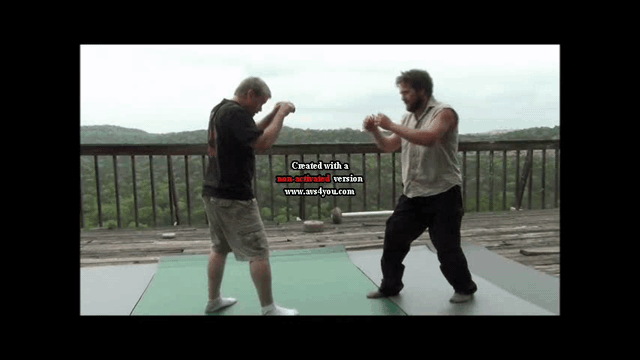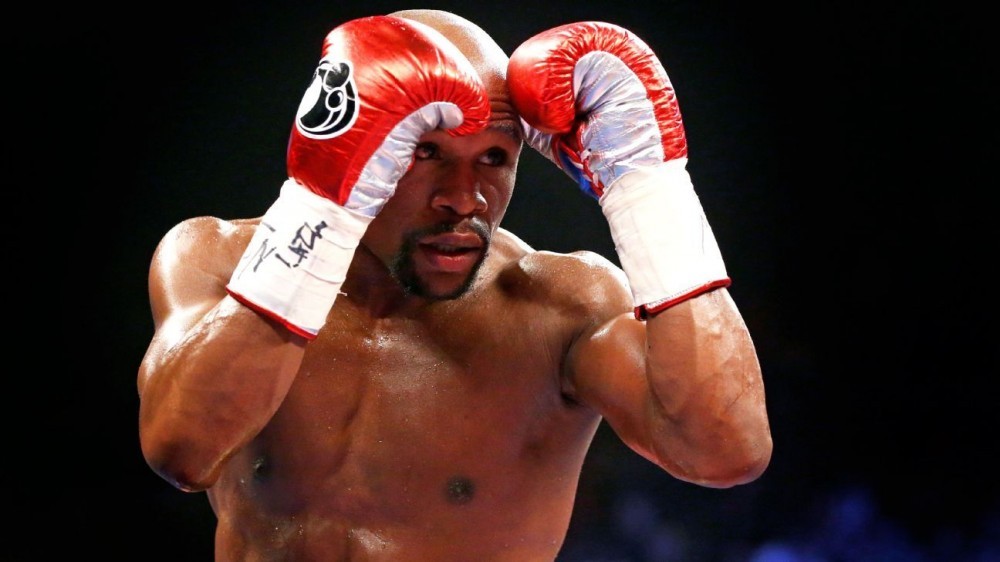If your arms are extended you are vulnerable to hooks as you can't quickly do a hair comb cover, you also can't quickly slap parry(pak sau in CMA).
This depends on how you use the long guard. Lower your stance and use long guard and your opponent will not be in a good position to throw a hook.
With long guard you don't need to slap parry. Long guards hand is closer to the opponents elbow than the opponents fist is to your face. As result control the elbow of a punch which is better than slap parry in my opinion.
Long guard used in close range. Long guard controls elbow.
Incoming punch gets past my long guard, but my long guard can still interfere with the punch at his elbow.
Incoming punch also gets past my short guard. There is nothing else that my short guard can do.
Punch has left my short guard.
Long guard still is in contact with punching arm.
Long guard interferes with punch returning to chamber. Had I been more skilled I would have used my forearm to control. Long guard controls arm
Long guard done incorrectly. Long guard controls wrist instead of elbow. Elbow is part of punch
Because he did not use the Long guard correctly, I was able to turn and counter. He cannot retrieve his hand because his Long guard is pinned against my short guard.
If you use the long guard incorrectly then it will bring nothing but trouble to you. If you use the Long Guard correctly then it will bring trouble to your opponent.
